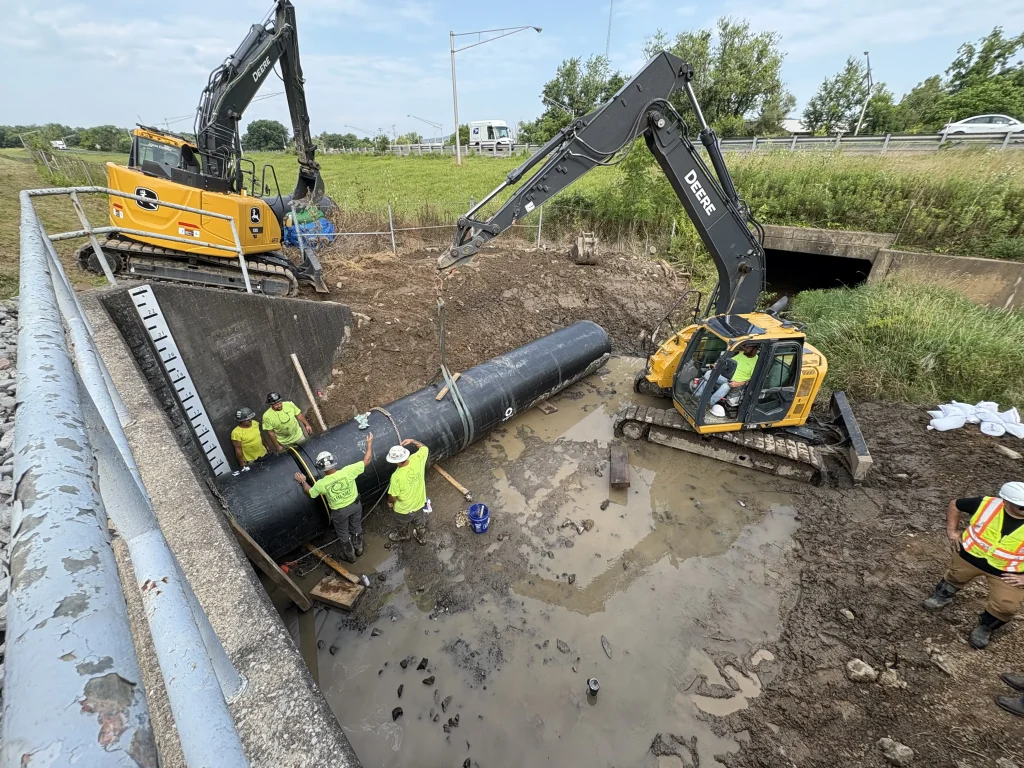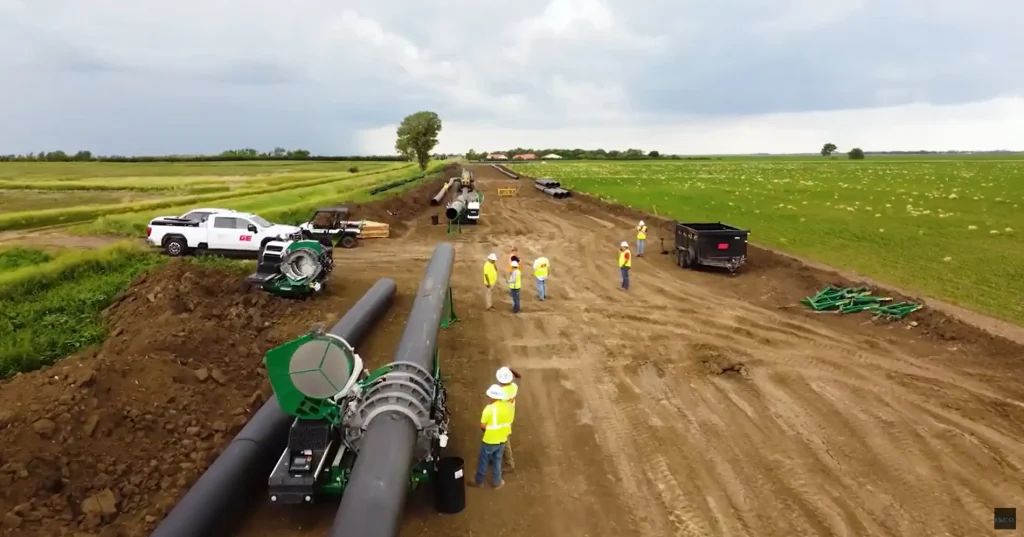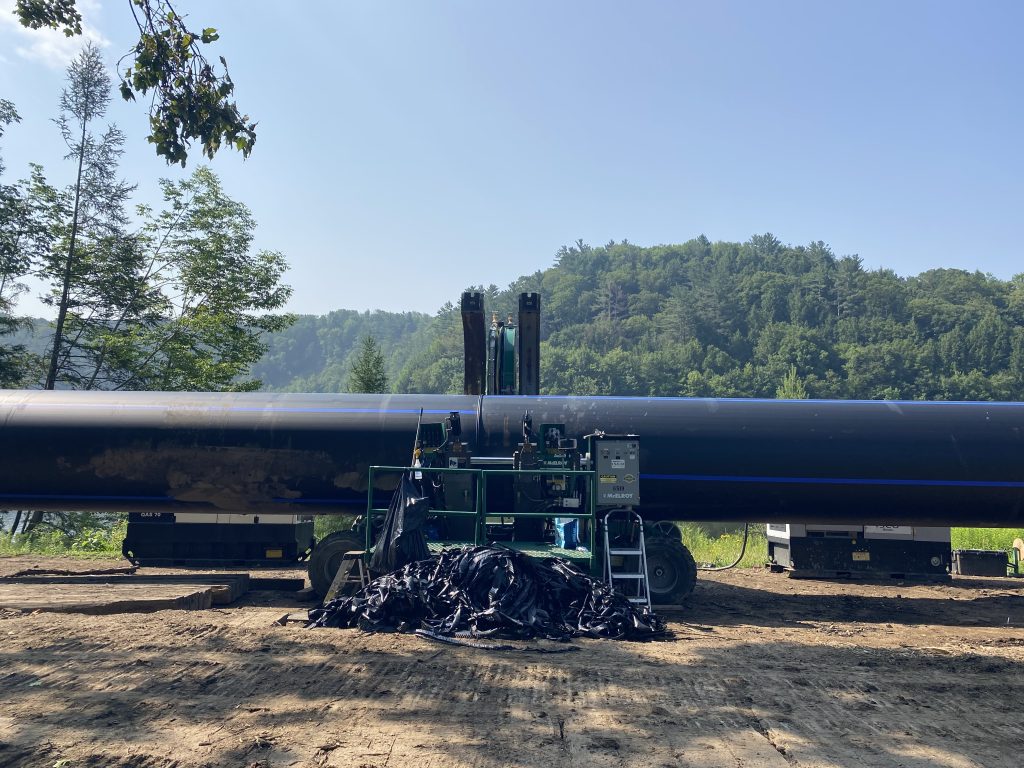Resources
Field Reports
Residential Property Left Undisturbed with Culvert Lining Solution
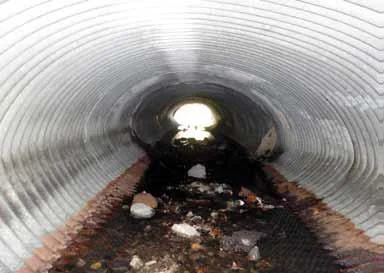
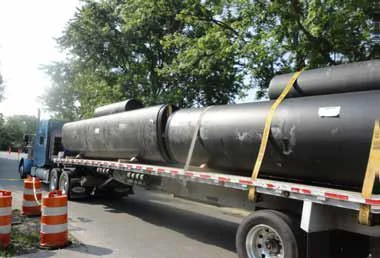
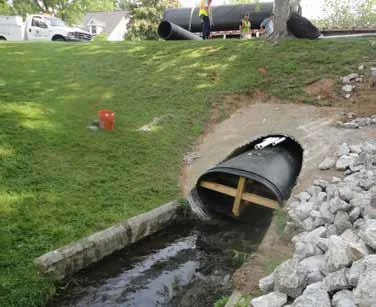
The Problem
A corrugated metal pipe (CMP) culvert located in a residential neighborhood on Sugatree Lane in Franklin, TN, was failing. It started at a junction box in the backyard of two houses and ran between the property-lines underneath the road, and outlet into a creek. In addition, this CMP was oval, not round, measuring 68 inches by 38 inches.
The City of Franklin needed to act quickly to repair the culvert before it failed completely. Fixing the CMP would require a no-dig solution because digging up the culvert would compromise the foundation of the homes.
The Solution
The city asked the Tennessee Department of Transportation (TDOT) to recommend a culvert lining product and company who had experience with lining techniques and technologies. The TDOT recommended the Snap-Tite culvert lining system. Snap-Tite representative Ryan Harrington worked with the city engineer, Paul Holzen to decide on the best solution for the oval culvert.
“The pipe we needed to replace ran between two houses and had multiple utility complications,” said Holzen. “Digging up the pipe would have required us to temporarily relocate an electrical transformer and electrical services. In addition, we would have had to temporary cap an existing waterline and bypass pump an existing sewer line. We had multiple utility conflicts and needed a no-dig solution.”
Snap-Tite pipe is made of high-density polyethylene (HDPE) pipe. Because of the flexibility of HDPE pipe, Snap-Tite has the ability to oval round pipe. Since the original pipe was 68 by 38 inches, Harrington suggested ovalling a 48-inch Snap-Tite pipe to make it easier to slip-line into the old culvert. For this project, the 48-inch pipe was ovalled to a diameter of 59 by 34 inches. Snap-Tite supplied 190 feet total of the ovalled pipe, provided in sections to be snapped together on site.
A unique feature of Snap-Tite is that it does not require fusion to join the HDPE pipe together. The ends of the Snap-Tite pipe are machined on each end. The machined male and female ends are then “snapped” together, piece-by-piece, on site using come-a-longs and chains. Once the pipe is joined, it is slipped inside the old culvert. Any annular space and voids between the old culvert and new liner are then filled in with grout.
The Installation
Another benefit of Snap-Tite is that it is easy enough to install without specialty equipment or contractors. The city used its own crews, instead of contracting out the work, which saved the city money.
During installation, the crew slid the first section of oval
Snap-Tite pipe liner into the oval culvert. Then they snapped a second section of Snap-Tite pipe onto the first pipe liner section using only come-a-longs and chains. This was repeated until all sections of pipe were snapped and pushed through the old CMP culvert. Once the CMP was fully lined, grout was used to fill in any annular space or voids between the CMP and the pipe liner.
The culvert also had two curb inlets, where the water draws from the roadway, which needed to be connected to the pipe liner. A 30-inch concrete box was built around the curbed inlets and lined with 28-inch DR 32.5 HDPE pipe.
Project Completion
Due to Snap-Tite’s smooth interior, even though the new diameter of the culvert was smaller than the original, flow actually improved.
“We saved more than 40 percent on this project because we used a lining method rather than digging the pipe up and replacing it,” added Holzen.
The homeowners were very pleased with the work after the project was completed because there was no disruption to their properties and no tearing up of the road.
